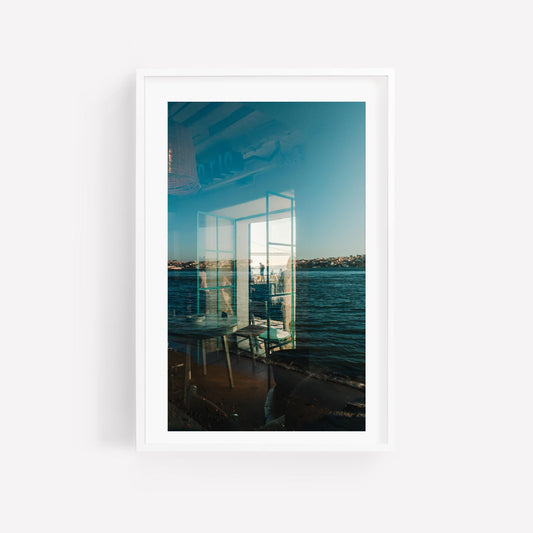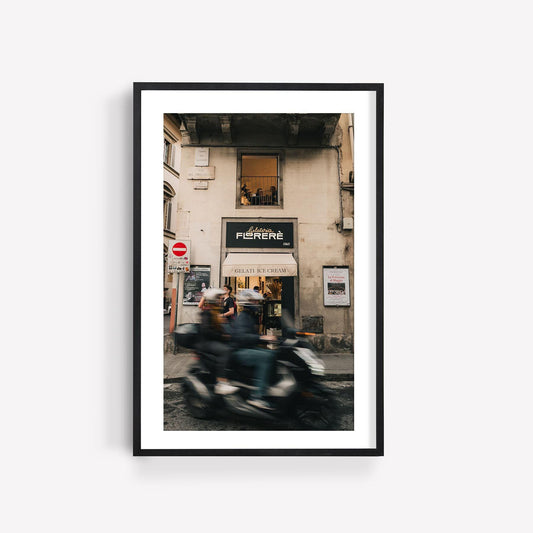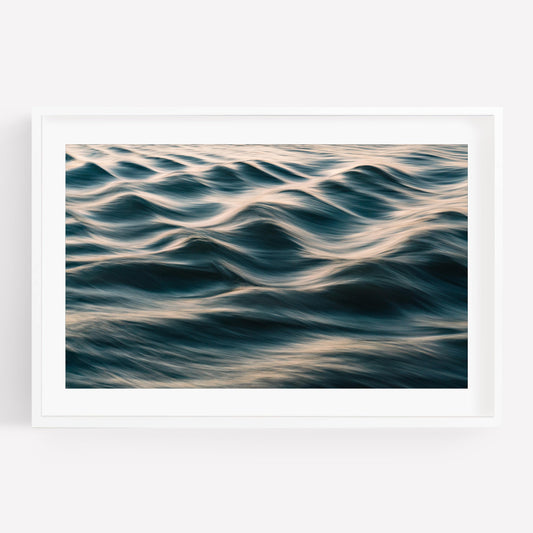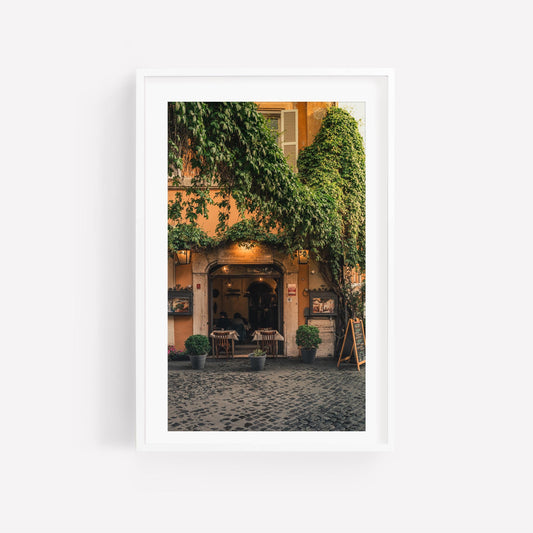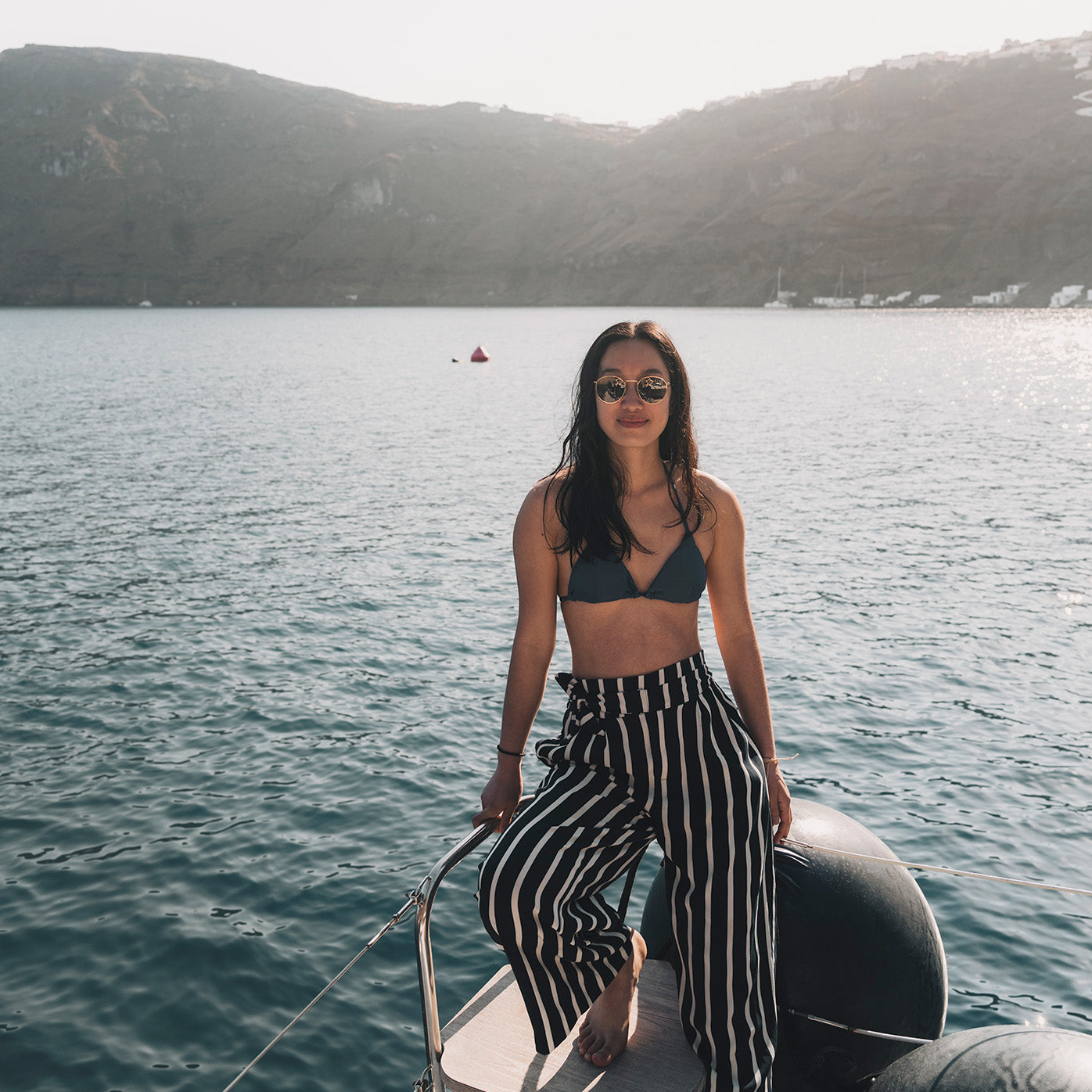If you haven’t traveled before but have the itch to experience what the world has to offer, this guide is for you.
Visiting a foreign land for the first time can seem daunting.
But like any other skill, traveling takes experience to build. Especially if you didn’t grow up traveling as a kid.
The good news is that it isn’t impossible. If millions of others can do it, so can you.
Traveling can be life-changing as it can build character and change the way you understand the world, so it’s a risk worth experiencing.
In this article, I’ll be sharing my ultimate guide for first time travelers on how to start traveling to help you embark on your journey with confidence.
Affiliate Disclaimer: Certain links in this article are affiliate links. When you click on one of those links and purchase, I will earn a small commission at absolutely no cost to you. Please note that I only promote products and services I believe will provide value.
Table of Contents
- The Value of Travel
- Difference Between a Traveler and a Tourist
- Get Into the Mindset
- Step 1: Choose Your Destination
- Step 2: Who to Travel With
- Step 4: Trip Duration
- Step 5: Planning Your Itinerary
- Organized vs Spontaneous Travel
- Advice on How I Stay Organized
- Flights/Transportation
- Accommodation
- Personalizing Your Activities
- Step 6: Travel Insurance
- Step 7: Travel Gear and Packing Necessities
- Conclusion
The Value of Travel
If you haven’t experienced the magic of traveling, you may wonder if it’s worth the effort.
And for most people, it is–assuming you’re in good health to travel.
Even if you’re content in your everyday life now, travel can alter your life in unexpected ways that develops your character.
It forces us to get uncomfortable and new environments can uncover a new side to ourselves. We learn what we’re capable of, but also what our limitations might be.
We’ll meet people and cultures that we’ve only read or watched about. When we travel, we learn about their thoughts, desires, struggles, aspirations, from their point of view. It helps us connect with those who may have perceived to be different from us.
This builds our character and empathy, and we may learn a different way of life than what we thought to be universal.
Difference Between a Traveler and a Tourist
"The traveler sees what he sees. The tourist sees what he has come to see." - GK Chesterton
There’s absolutely nothing wrong with snapping a selfie at the Eiffel Tower. After all, it’s quite a spectacle and we all need to update our family and friends!
But it’s also worth it to experience the intangible and intricate culture that a place has to offer.
Perhaps meet the locals, watch how they behave, be open to different lifestyles and cultural values, and see how those values trickle down into their daily lives.
This is the greatest reward of travel because hearing about it is nothing like experiencing it first-hand, just like any other experience.
Get Into the Mindset
If you’re unsure or nervous about this first trip, don’t worry–it’s normal.
To get you in the mindset, it’s time to channel your inner boss energy. Remember that never in history has it been easier to travel, especially if you know how to navigate the internet.
Therefore, if millions of others can do it, so can you!
Step 1: Choose Your Destination
Understanding Your Experience
The first step in choosing your destination is to understand that not every destination is made equal.
If you’re from a first world country like myself, then countries that are similar are great starting points.
Although traveling encourages us to get out of our comfort zones, it is still a skill that I recommend building one “level” at a time.
The more different the culture, language, weather, and standard of living, the harder it is to adjust for beginner travelers, especially if you’re traveling solo or with other beginner travelers.
For example, if you’re from the United States, it’s easier to start with Canada, UK, Scotland, Australia, Singapore, or other English speaking countries with similar lifestyles.
Side Note: If you’re traveling with any health complications, it is helpful to research the weather. For example, heat and humidity may be uncomfortable for those with respiratory conditions. And if you decide to go, please make sure to prepare proper medical needs beforehand.
I find visiting other cities to be easier with food and transportation readily available. Nevertheless, if a city trip doesn’t appeal to you, starting with a nature trip could be an option.
As you get more comfortable with being uncomfortable, destinations with vastly different lifestyles and cultures will become easier to navigate.
Also, feel free to choose a destination within your home country. Not everyone is ready for a new country yet, and that’s okay.
Nevertheless, if you feel like you’re ready for a big leap in culture and language, then feel free to go to faraway places. There’s never a right or wrong–it’s being honest with yourself about what will help you take that first step as a traveler.
Safety
Another major concern that you may have is safety.
While safety is a feeling as some individuals may feel safer than others (depending on personal experience, gender, physical looks, defense skills, etc.), we can't deny that some countries are overall safer for travelers.
As a beginner, it's helpful to start with safer destinations as you'll feel more confident trying new things and meeting locals.
The safety of a destination can consist of:
- Political landscape
- Are there any terrorism or potential turmoil currently happening in that country?
- Country's stability/corruption level
- How stable and trustworthy are public officers? Some third-world countries require bribing police officers for help.
- Crime rate
- How often do violent crimes happen?
- Female traveler safety
- Does this destination have harassment culture that makes female travelers uncomfortable?
- Natural threats
- Are there any dangerous animals/plants?
- Has there been any news about a budding virus?
These safety considerations are not meant to scare you away from your first trip, but rather to serve as realistic points to help you prepare before and during your travel.
The world is a beautiful place, but it's always beneficial to learn about the political, cultural, and environmental landscape of the destination you're visiting.
To understand the general safety level, you can visit your country’s travel advisory:
- Linking USA Travel Advisory HERE
- Linking Canada Travel Advisory HERE
- Linking UK Travel Advisory HERE
- Linking Australia Travel Advisory HERE
Aside from the general safety advice, it's important to keep in mind how thorough their safety regulations are for any excursions/activities you're interested in: scuba diving, bungee jumping jumping, etc.
Generally, the activities in touristy destinations across the world are pretty safe, but I would avoid any sketchy tours if you're unsure. Reading the reviews on your tour guide is always helpful.
Finally, it's important to trust your instincts when navigating an unfamiliar place and meeting new people. If you ever feel unsafe during your travel, there's no need to reason with it–simply trust your gut about what feels right.
Passport/Visa Requirements
Depending on what passport you have, a visa might be required for select destinations.
Different countries have different visa fees, and these fees can also vary based on factors such as the duration of the stay, and whether the country has a reciprocal visa arrangement with your home country.
To find the specific cost of a tourist visa for a particular country, it's best to check the official website of the embassy or consulate of the country you’d like to visit.
Budget
As cost of living is different in each country, I recommend doing research on how much you’d need per day to account for:
- Flights
- Accommodation
- Transportation
- Meals/snacks
- Activities
Then, simply multiply that by the number of days you’ll be visiting that place.
The first things I research and reserve are my accommodations and flights as they will likely take up ~50% of my trip budget.
If you’re traveling on a budget, consider spending longer in destination(s) where your currency is stronger and fewer days where your currency is weaker.
For example, a standard meal in Hanoi, Vietnam typically ranges from 1 to 7 USD, whereas it would cost 15 to 30 USD in London, UK.
Step 2: Who to Travel With
Who we travel with can create different experiences for the trip as relationship dynamics vary.Some questions to ask when deciding who to travel with are:
- Do I want more freedom during this trip?
- What is my purpose for this trip? Some examples include:
- Work
- Learn to be more independent
- To bond with loved-ones
- Meet other like-minded people
Travel with Friends/Family
Family travel will be required if you plan on bringing kids. Aside from that, traveling with friends and family is great if you prefer to bond with loved ones and build memories that may last a lifetime.- Pros:
- Reminisce about the stories with them long after we come back from the trip
- Creates less heartbreak when the trip ends because we know we’ll see each other when we get back
- Easier to split accommodation costs
- Have people you trust if things go wrong on the trip
- Cons:
- Sometimes we want to do different things, hence I’d have less freedom to tailor the trip to match my interests.
Solo Travel
Solo travel can be done completely alone or with strangers that you connect with online or at hostels.Some places to find like-minded people are:
- Hostels
- Meet-ups
- Online Facebook groups
Cons:
- It’s harder to build meaningful relationships because other travelers are also following their own itinerary.
- Can occasionally result in homesickness
- You’re the only person to rely on during an emergency so it’s important to prepare beforehand, including travel insurance and adequate medical supplies.
Group Travel
Group travel is an option for both solo travel and those traveling with friends and family.
I’ve done a monthly-long marine conservation program in Portugal with IVHQ and a month-long Southeast Asia tour with GAdventures.
Pros:
- You’re more likely to meet like-minded individuals and make life-long friends compared to completely solo travel.
- Allows you to spend time alone without sacrificing the fun of traveling with new friends.
- Your tour guide will likely have strong local knowledge, which will take the stress off of planning your itinerary and offer richer insights into local life and culture.
- Great option if you’re unfamiliar with the region and would feel more comfortable having a guide.
- Great option if you’re traveling to rural areas that require local transportation or nature excursions that might be unsafe without a professional guide (i.e., cave exploring, climbing steep mountains).
Cons:
- Can’t guarantee that you’ll get along with everyone in your group
- The people you meet most likely will not come from your hometown or country so it’s always sad to leave as you don’t know when you’ll see them again.
- You have less control over the itinerary. For example, during my GAdventures tour, more than half the days required waking up at 6am to drive to a new city/town.
- Depending on what tour company you book with, your solo time varies. GAdventures was rather good at this as they make sure to leave space for us to choose our own activities in each location.
- Will cost more as you’re also paying for the tour guide’s service
Step 4: Trip Duration
Customizing your trip duration is a science and an art that comes with experience. Aside from my budget, I also consider whether I’d be happy staying at a new place for an extended period of time.
The reason I went back to Portugal for the volunteer program was because I visited Lisbon for a 3 day trip during my study abroad before and absolutely fell in love with the city.

For places that I haven’t been to, I tend to not spend more than a week there in case I didn’t vibe with the place.
Therefore, it’s common to start with a shorter trip if the destination is close to you, or a longer trip (2+ weeks) that consists of multiple destinations within the same region to test out which cities/countries you like best.
An example of a long trip with multiple destinations could be a Europe trip through major cities to get a feel of each. It’s also quite easy and inexpensive to travel across Europe compared to other continents.
And if there’s a city or country you really want to visit again, you can always come back in the future for a longer stay!
Step 5: Planning Your Itinerary
Needless to say, each personality is different and it translates to how we travel. There is no right or wrong method, it’s about what works best for you and/or the people you’re traveling with.
Organized vs Spontaneous Travel
Some people enjoy the spontaneity of travel with the feeling of not knowing what they’ll do next. On the extreme end, spontaneous travelers might book their flights the night before and not have an accommodation planned when they land.
On the other hand, highly-organized individuals might have a Google Doc planning their days to the minute.
Most people fall in between, as do I. As a travel photographer, I like to build out a general itinerary of the cities I’d like to visit with one or two main activities to make the most of my trip.
Aside from that, I leave room for spontaneity, as unplanned moments are often gold.
Advice on How I Stay Organized
I stay organized by creating a Google Doc so I can keep track of the things I’ve booked and my general itinerary.
Having a shared document is also helpful if you’re traveling with friends or family so everyone is on the same page.
Other ways to stay organized for your trip is to use a digital travel planner. You can find plenty on Etsy.
Flights/Transportation
Flights and transportation are usually the first things I book once I’ve decided on the trip. This is because it is the foundation for the duration of my trip. Accommodation and activities can be booked afterwards once I know which days I’ll be there.
If you’re on a budget, I suggest avoid booking during peak-seasons. Peak-seasons vary by destination as per weather and time availability from travelers.
For example, many Americans travel during summer months (June to August) as kids are out of school.
To estimate the cost of your flight ticket, visit Google Flights, where you’ll be able to see the flight cost per month:

Accommodation
For short trips (one week or less), I choose my accommodation based on how many people I’m traveling with and how expensive the destination is.
For longer trips, I mix and match the type of accommodations to experience a variety. For example, my 3 week trip to Europe consisted of:
- Luxury hostel in Santorini
- Hotel room in London
- Co-living space in Biarritz (with Outsite)
- Airbnbs in Rome and Florence
- Cute boutique hotel in Venice
Personalizing Your Activities
The last part of my itinerary building is to personalize must-do activities for each destination, and book them beforehand.
Websites I use to book activities include:
- TripAdvisor Experiences
- Viator
- Airbnb Experiences
This starts with researching on Google “top things to do in xx”. Then I list the ones that excite me the most.
As a photographer, I also Google “top places to photograph in xx.” and plan to visit those places during good lighting.
Step 6: Travel Insurance
Is Travel Insurance Necessary?
Travel insurance is designed to provide coverage and protection for unexpected events and emergencies that may occur during your trip. It typically includes coverage for trip cancellations due to select reasons, trip delays, medical expenses, lost luggage, and other unforeseen circumstances, offering travelers a safety net and peace of mind.
If you decide to do group tours, they often require travel insurance as they’re responsible for your safety.
If you don’t use tour groups, travel insurance is not mandatory, but can be useful as a source of extra support. Whether you’re a budget traveler or looking for a more comprehensive travel insurance, there are good options for each price point.
Which Travel Insurance to Choose From?
WorldNomads
My personal go-to as they offer affordable and customizable travel insurance and have the Explorer Plan, which covers medical care for extreme sports.
Allianz Global Assistance
Provides a range of travel insurance plans with different coverage levels, including budget-friendly options.
Berkshire Hathaway
A reputable travel insurance provider with financial strength and variety allows travelers to choose coverage that suits their specific needs.
Step 7: Travel Gear and Packing Necessities
Backpack vs Luggage
If it’s your first time traveling, it’s good to invest in high quality travel gear to avoid mishaps like luggage breaking or bag ripping.
While suitcases might be the traditional go-to travel bag, backpacks and duffles will be more suitable for nature destinations or cities that don’t have flat roads.
If you’re planning to visit rural destinations that might require buses and small cars, soft bags like backpacks and duffles will also come in handy as hardside luggages are not malleable.
If you’re visiting hilly cities like Lisbon, a backpack will be handy as you won’t have to drag your luggage up and down the streets.
If you’re traveling with a laptop, it’s best to put it inside a hardsided suitcase, or a personal item with a dedicated laptop sleeve.
For my Vietnam trip, I brought a duffle as I expected to walk on uneven land in most of the nature destinations, but I took my hardsided luggage with me to Europe as I needed to bring my laptop.
Travel Toiletries and Emergency Medical Items
When preparing for travel, it's essential to pack a set of travel toiletries and emergency medical items to ensure a comfortable and safe journey.
Toiletries Kit
Include travel-sized versions of essential personal care items such as toothpaste, toothbrush, shampoo, conditioner, body wash, and a razor.
If you’re flying, airports require less than 3oz for all liquid items when you go through security. Otherwise, they’ll ask you to throw it out.
Medication
Bring a supply of any prescription medications you may need during the trip. I recommend carrying them in their original packaging with clear labels to avoid any complications.
First Aid Kit
Pack a basic first aid kit containing adhesive bandages, antiseptic wipes, pain relievers, and any specific over-the-counter medications you might require.
This will be handy especially if you travel to rural destinations or countries with less developed medical care.
Travel-Sized Sunscreen
Protect your skin from sun exposure by including a travel-sized sunscreen.
Hand Sanitizer
Given the importance of hygiene, especially post-Covid, carry a small bottle of hand sanitizer to maintain cleanliness, especially when soap and clean water may not be readily available.
Insect Repellent
Depending on your destination, consider packing insect repellent to ward off mosquitoes and other biting insects.
SIM Card and Phone Plans
My family and I use T-Mobile’s International Plan that has unlimited basic data and texting in over 215 countries. It works as soon as I arrive without having to buy a new SIM card, which is convenient.
But if your phone plan doesn’t include international service, I recommend getting an e-SIM (electronic SIM card) that you can purchase online or on your mobile device.
Many mobile carriers provide dedicated apps that allow users to manage their mobile plans.
Another way to get an e-SIM is to purchase through a mobile app:
- Airalo: Offer services in over 200 countries
- Nomad : Offer services in over 160 countries
- Flexiroam: Offer services in over 200 countries
Conclusion
The decision to start traveling can be a life-changing experience. I hope this guide provided you with valuable personal insights and tips on how to start traveling.
In an age where traveling is easier than ever, it’s a great way to broaden perspectives, build character, and connect with diverse cultures.
Although travel comes with experience, this guide will give you a jumpstart, providing practical advice for choosing your first destinations, understanding passport/visa requirements, budgeting, selecting travel companions, and more.
It may seem a lot to learn, but remember, if millions of others can do it, you can too! You’ll get the hang of it in no time and eventually start to develop your own style of traveling.
What works for me might not work for you. Go with the flow and explore who you are as a traveler.











